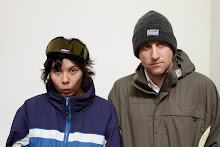Anyone involved in film or TV will know the importance of cutaways. Well, you'd like to think so, at least.
For those of you know don't know, a cutaway is defined as 'interruption of a continuously-filmed action by inserting a view of something else. It is usually followed by a cutback to the first shot, but not always' (thank you Wikipedia for your detailed explanation - check out the article of you want to know more).
Basically, they make the action clearer; they give you detail on a character's movements or actions; they help the film make sense. A character says he needs to be somewhere at 2pm and sneakily looks at his watch, and then you see a closeup of the the watch and you know from the fact that it says 2.15 that he's running late. Vital information is revealed, the plot progresses - hooray!
Funnily enough, for whatever reason, 'Pisces, Arise!' is almost entirely cutaway free. I could say that this was a bold new film making technique where we draw the audience entirely into the world of the characters; immersing them so deeply that we never want to draw them away by distracting shots that are not relevant to the deeper emotional state of the characters.
Or, I could say that we just forgot. It happens. Especially when you're making your first film, you're short on time, everyone is a bit stressed, and it's 2am on your first shoot day and you're already six days behind schedule.
We've cleverly faked a few cutaways (don't ask how), but the issue is often that a bad /incorrectly filmed cutaway is even worse than having no cutaways at all.
Garth Marenghi's Dark Place, one of my favourite shows, uses bad cutaways to hilarious effect in some of the episodes.
And the good people from Full Frontal also have a very amusing sketch -more about news-related cutaways, but nevertheless very funny. Check it out below.
Subscribe to:
Post Comments (Atom)


No comments:
Post a Comment